The Trump Effect is REAL: US Goods Trade Deficit Falls 46 Percent in April as Imports Decline
WOW. Inflation DOWN. Incomes UP. The trade deficit was SLASHED, and the data is undeniable.
By Andrew Moran
June 1, 2025
The U.S. goods trade deficit declined sharply in April from a record in March as the effects of front-running President Donald Trump’s tariffs faded.
And the Democrats hate it and are upending the country to stop President Trump. Ask yourselves why.
WATCH: Rapid Response 47 on X: "CNBC's Rick Santelli: "The income numbers, really, for the first four months of year — they're stellar ... This administration is criticized for just about everything under the sun ... Why don't we give credit where credit is due? Income really shooting up." 🔥🔥 https://t.co/TuqN9JMoIp" / X
According to an advance estimate from the Census Bureau, the goods trade gap plummeted 46 percent, to $87.6 billion, from the all-time high of $162.25 billion registered in March.
This represented the smallest trade deficit for goods since December 2023.
While economists had anticipated a substantial slowdown, last month’s reading came in better than the consensus forecast of $141.5 billion.
Goods imports tumbled 19.8 percent, or $68.4 billion, to $276.1 billion. Exports of goods rose by 3.4 percent, or $6.3 billion, to $188.5 billion.
Advance retail and wholesale inventories were virtually unchanged at $803.5 billion and $906.9 billion, respectively.
Leading up to the president’s sweeping global tariff plans on April 2, companies had rushed to stockpile consumer goods to avoid the anticipated levies.
Declining imports are expected to bolster the GDP growth rate in the current quarter. Imports are subtracted from the GDP calculations because they measure the value of goods and services produced domestically.
Early forecasts suggest that the U.S. economy may experience a rebound in the second quarter.
The Federal Reserve Bank of Atlanta’s widely watched GDPNow Model points to a 3.7 percent expansion in the April–June period. This is up from the regional central bank’s 2.2 percent estimate prior to the publication of the goods trade deficit.
In the first quarter, the U.S. economy contracted by 0.2 percent—the reading was revised upward by a hair from the initial estimate of negative 0.3 percent—primarily driven by soaring imports and a modest decline in government spending.
In addition to U.S. businesses perhaps temporarily pulling back on their spending, individuals also tempered their consumption.
According to the Bureau of Economic Analysis, personal spending rose 0.2 percent in April, down from the 0.7 percent increase in the previous month.
The increase in current-dollar personal income in April primarily reflected increases in government social benefits to persons and in compensation.
The $47.8 billion increase in current-dollar PCE in April reflected an increase of $55.8 billion in spending on services that was partly offset by a decrease of $8.0 billion in spending for goods.
Personal income, however, surged at a pace that was significantly better than expected, at 0.8 percent.
The data do not signal an economy on the brink of disaster, but the numbers illustrate how tariffs can facilitate specific patterns, says Joseph Brusuelas, the chief economist and principal at RSM.
“It is an example of how the threat of higher tariffs dramatically affects spending by businesses, first in the front-running of purchases to avoid higher costs, and then in the pullback once inventories are built up,” said Brusuelas in a May 30 note.
“This data only adds to the uncertainty around the economic outlook at a time when trade policy changes on an almost daily basis.”
Eyeing a June Rebound
Market watchers will monitor the June trade data to determine if companies will accelerate imports amid the 90-day tariff ceasefire between the United States and China.
U.S. and Chinese officials agreed to thaw the icy trade tensions and temporarily suspend most tariffs.
As a result, the trade truce resulted in the United States lowering its levies on Chinese goods from 145 percent to 30 percent.
Economists at Oxford Economics stated that the U.S.-China tariff would offer companies a chance to avert sizable tariffs, which would prevent product shortages and supply chain disruptions.
While there might be some hiccups along the way, the string of trade-related announcements from the Trump administration could reduce the odds of a “worst case scenario,” they said.
“A readiness by both the U.S. and China to lower tariff rates reduces the risk of a prolonged period of brinkmanship and prohibitively high tariff rates,” they said in a recent research note.
“So the announcement lowers the odds that our worst-case scenario, involving U.S. tariffs on China of over 100 percent for a prolonged period, will materialize.”
However, the deal has come under the spotlight after President Trump said on social media that Beijing “totally violated” the Geneva trade agreement.
“China, perhaps not surprisingly to some, has totally violated its agreement with us,” Trump said in a May 30 Truth Social post. “So much for being Mr. Nice Guy!”
The president stopped short of explaining how the Chinese regime violated the May 12 deal.
U.S. trade representative Jamieson Greer echoed President Trump’s remarks, stating that Beijing was not in compliance with the arrangement.
“The United States did exactly what it was supposed to do, and the Chinese are slow rolling their compliance, which is completely unacceptable,” Greer told CNBC’s “Squawk Box.”
“I believe that we will be having more talks with them in the next few weeks, and I believe we may, at some point, have a call between the president and [Communist] Party Chair Xi [Jinping],” Bessent said during a May 29 interview with Fox News.
Since the mid-May meeting in Switzerland, the White House has focused its efforts on negotiating with other major trading partners, including the European Union, India, and Japan.
READ MORE:
Complete US decoupling from China
China Just 'Folded' in the Trade War
Looming Trump Tariffs Spark Wave of Freight Frontloading from China
Share or comment on this article.
Your support is crucial in exposing fake news and in helping us defeat mass censorship.

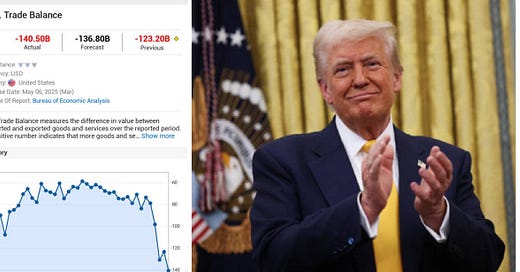



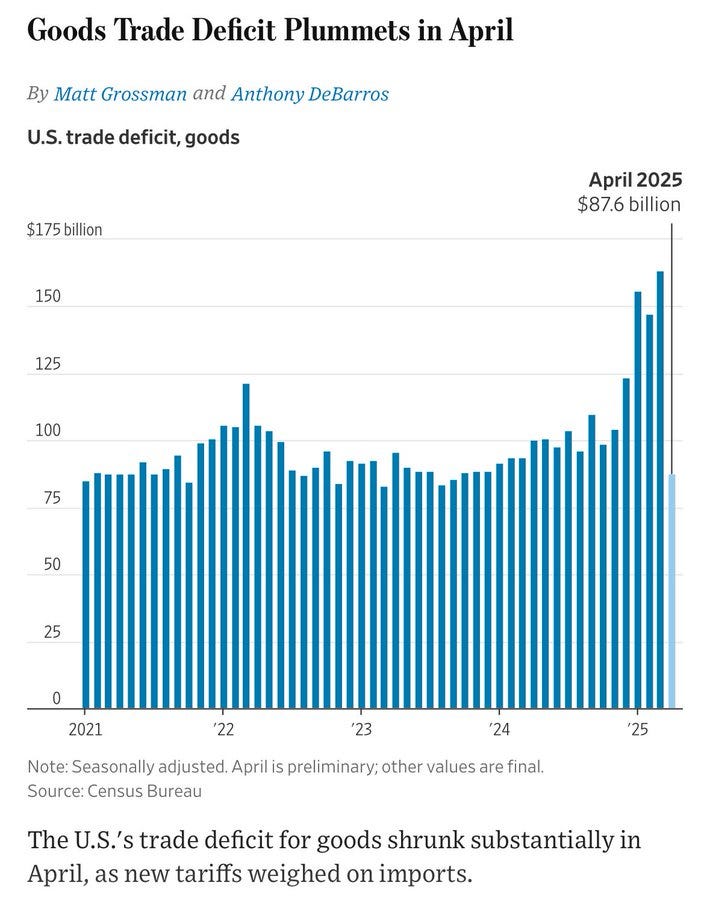
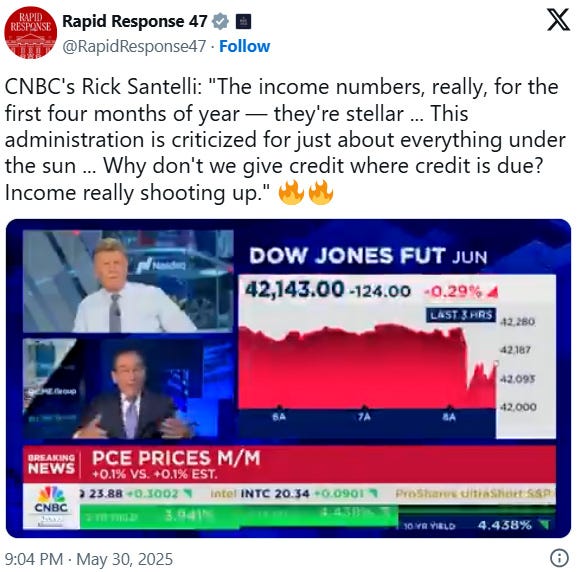
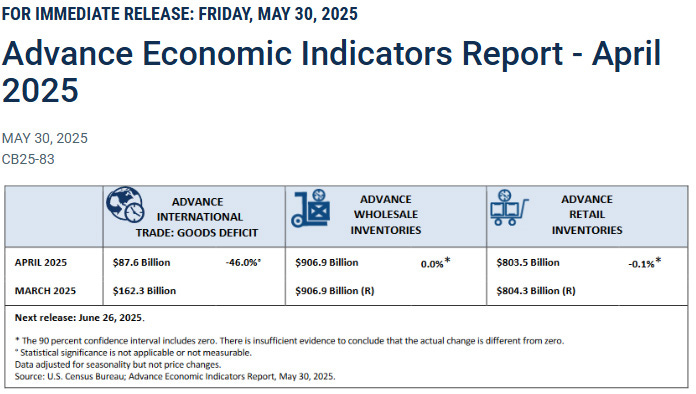
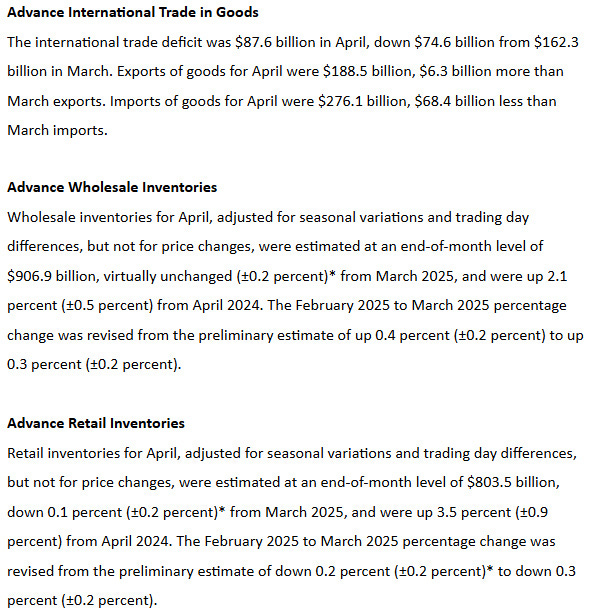
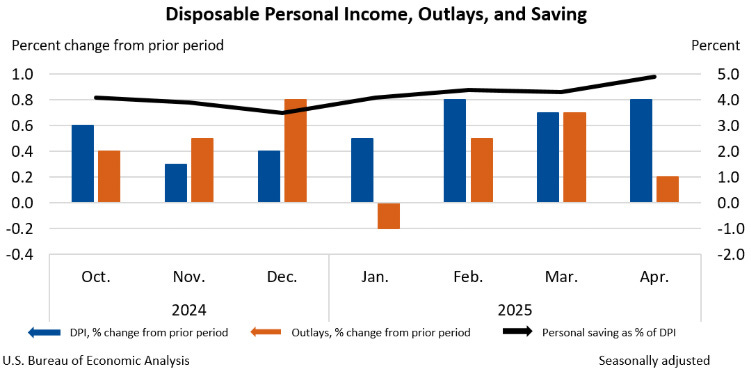

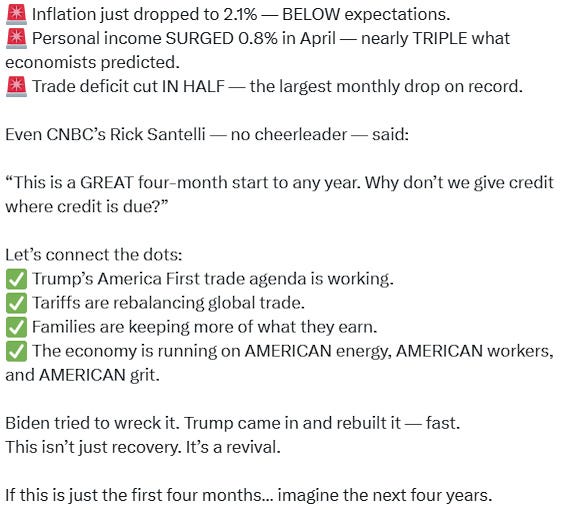
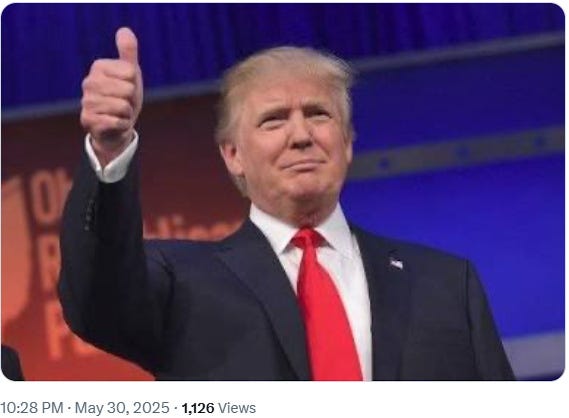
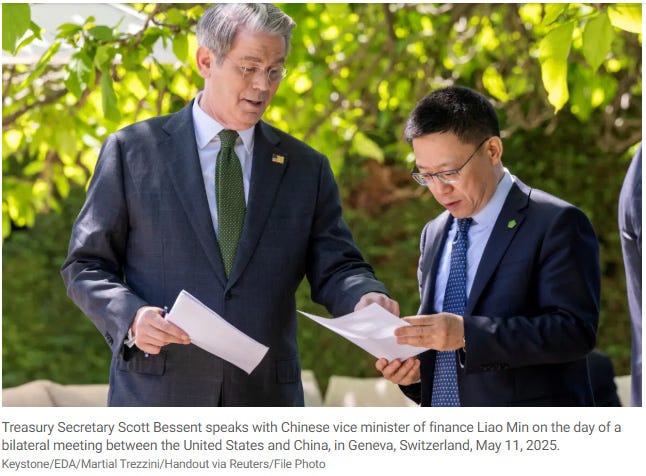
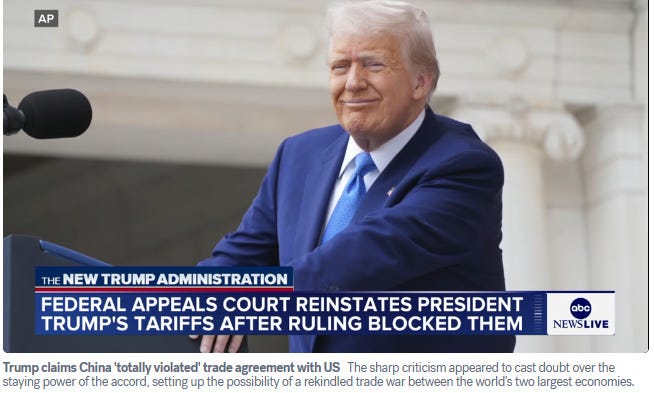

Trump told us this would happen and the Fake News Media told us the USA was going to die.
FAKE NEWS lied and looses. AGAIN!!